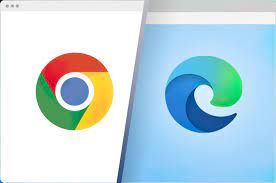Microsoft Edge and Google Chrome are a very modern web browser that can be accessed in most modern computers. Both web browsers can bring you virtually anywhere you want to go on the web with a few exceptions, and both are relatively easy to use and chock full of useful features. In most computers and cellular devices, it doesn’t take a ton of system resources if you make sense with how much tab you left behind. Of course, not everyone (including myself) is all that makes sense when it comes to open a lot of tabs to work, and as a hardcore chrome user, it’s interesting to consider whether or no better turning to Microsoft Edge as a regular job or not a browser While multitasking.
Next, you might be interested in understanding the specific differences between these two browsers for your own needs. Sometimes, you can find a website that only works with Google Chrome or Microsoft Edge, which makes it worthy of at least having them installed on the same device. This comparison guide explains the subtle difference between the two browsers, comparing the specific ways that they are separated in categories such as performance, design, security, and cross-platform continuity for easy access to websites that you recently visited.
Google Chrome is a Google Premier Web browser, originally released for Windows XP on September 2, 2008, as an exclusive freeware. Now is the most distributed web browser throughout the web, available on most computing devices including iPhone, iPad, Android tablets, Linux computers, ICs, computers, and quite a lot of laptops. It is the first browser to introduce many modern features that are now in other browsers, such as special extensions to expand their abilities, and synchronize cross-devices that mean you can, for example, take your phone and continue to read the page where you left on your PC.
In the early time, Google Chrome’s minimalist layout and compatibility (and adjustment) have attracted adoption of most internet users at several points; Peaked at 72% of all internet users at the end of 2018. In the spring of 22%, the figure fell to 64.91% of internet traffic in accordance with the StatCounter direct tracker. Chrome is still the most widely used web browser throughout the world, with at least 50% of margins of all web users – Apple Safari is present in second place with an adoption rate of 9.77% at the time of writing this guide.
Microsoft Edge is basically Internet Explorer 2.0, but it is far less clumsy. On the one hand, it was Microsoft’s direct response to Google Chrome, and the result was a great exploring experience over what was once the experiences of exploring truly stiff and often insecure on Internet Explorer who has now been obsolete – that’s why so much Users choose to immediately download Chrome or Mozilla Firefox on a new Windows computer and set it to their default browser, leave Internet Explorer.
Microsoft EDGE is actually worth used, and as the default on Windows 10 and 11 computers, you don’t need to download and install anything else to get the best browsing experience. Like Google Chrome, Microsoft Edge has cross-device compatibility on each type of main device listed before Minus Linux and Chromebook. Linux support is being tested, but there is no planned Chromebook support at all. For Windows users specifically that have not updated it to Windows 10, Microsoft EDGE works on Windows 7 and is higher.
